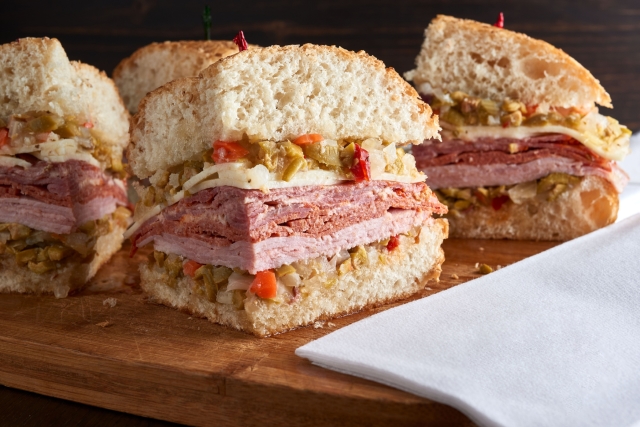
You are probably familiar with panini sandwiches and maybe even the tramezzino, but what about the puccia, muffuletta and trapizzino?
Italy has much more to offer than pizza and pasta in terms of culinary specialties, with a rich array of street food or sandwiches to eat more or less on the go.
Puccia
The food scene in Puglia isn’t just about orecchiette, those little ear-shaped pasta forms. Known for its production of durum wheat flour, this southern Italian region is also known for a variety of traditional breads, one of which is specially prepared to be bitten into along with a stack of cold cuts and vegetables.
Using bread with a golden crust, the puccia is garnished with cheese, tomatoes or other vegetables. The originality of puccia comes from baking the dough on a lava stone or over a wood fire. This bread has a long rising time, up to 24 hours, which gives the dough a nice crust, which is also formed by its high baking temperature.
Muffuletta
Provolone cheese, grilled eggplant, coppa, mortadella and a round bread that is as high as it is rich. Originally from Sicily, the muffuletta is eaten on the Feast of the Dead in November, garnished with anchovies, tomatoes and oregano.
The muffuletta, which is also eaten in New Orleans, Louisiana, in the United States, maintains the tradition of Sicilian farmers who ran a fresh produce stand in the French Quarter at the beginning of the 20th century. The recipe has traveled so much that it owes its origin story to both New Orleans and Sicily. The bread of a muffuletta sandwich must be very soft to be qualified as such.
Trapizzino
The trapizzino, which is neither a tramezzino — the famous sandwich made of bread in the shape of a triangle —nor a pizza, does bring the two together.
The trapizzino, which is made of a very airy pizza dough which stands like a cone, is topped with typical Italian garnishes like Bolognese-style meat, cream and anchovies, parmesan and eggplant, chicken in sauce and Roman-style tripe.
Its shape, which resembles that of a wallet, updated how pizza could be eaten and revolutionized street food on the go in Rome and everywhere else in the country.
At its origins, the trapizzino is not a traditional Italian recipe, since it was the owner of a pizzeria in Rome who launched the concept in 2008. Since then, it has been a success, with a dozen Trapizzino outlets in the city. The small triangle, crunchy on the outside and soft on the inside, has even crossed the Atlantic, finding an address in New York in Lower Manhattan. CC
RELATED STORIES:
How Italian restaurants are trying to survive the pandemic
Buzz off: Italian startup offers social distancing bracelets


